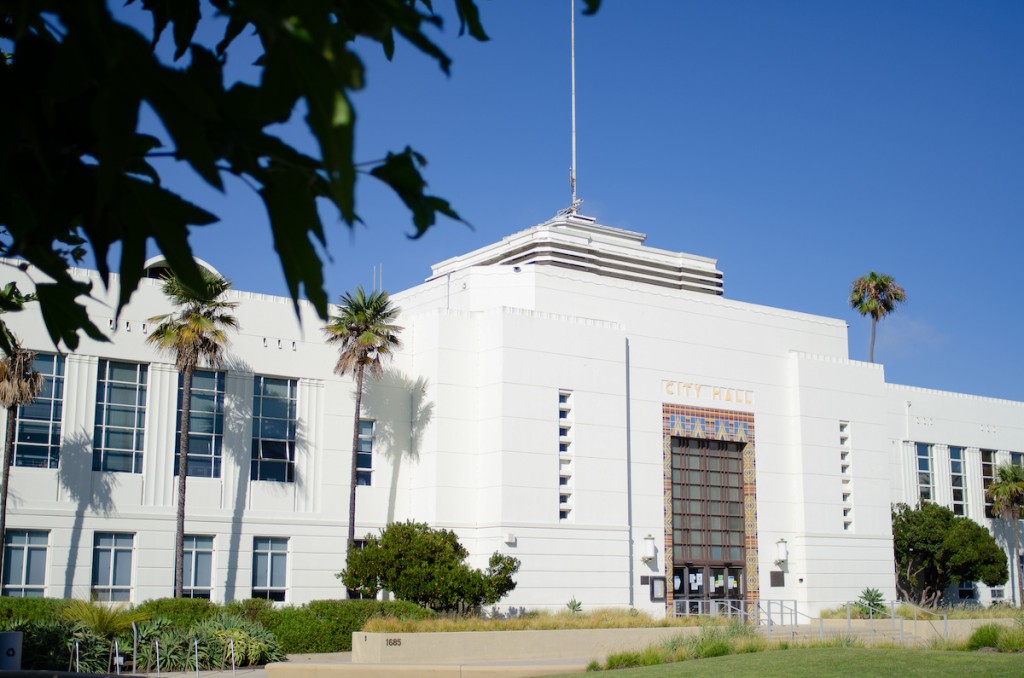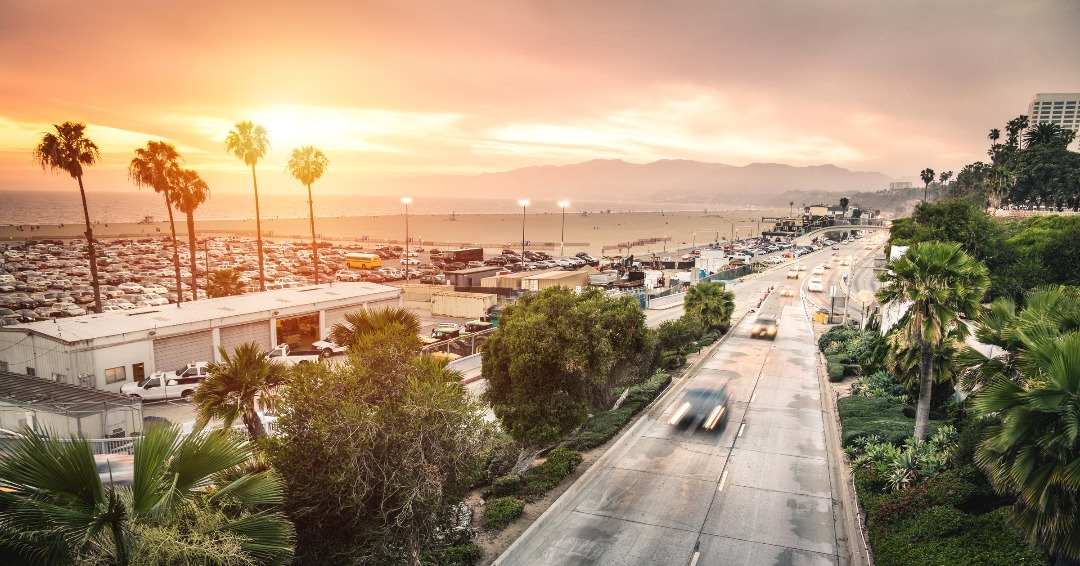
It’s that time of the year again, when people and organizations look ahead and make resolutions to try to do better than they did last year. S.M.a.r.t., Santa Monica architects for a Responsible Tomorrow, is no different. We too look for ways to do better next year. Naturally our annual resolutions, like many people’s, tend to be somewhat repetitive year to year because of the long-term nature of the changes we are proposing and the immense inertia of the systems we confront. For example seven years ago we wrote several articles advocating the adaptive reuse of commercial buildings for residential uses and now the City is finally considering implementing this obvious solution as it updates our zoning code.
Godzilla Is Coming to Town
However, this year is different for three reasons. First the City faces challenges as it settles the multiple PAL (Police Activities League) legal issues. Regardless on how these legal issues play out, the City will invariably have fewer fiscal resources available. Second, this is the year that Sacramento actually starts coercing the City to permit a 20% population increase over the next eight years with a new Housing Element. This catastrophe will result in dozens of over sized (some up to 15 story) projects crushing, Godzilla like, our seaside City. Finally there are looming unknown externalities (processes outside our direct influence). The two biggest potential externalities to watch are the severity of the projected recession and the severity of the long tail of the Covid crisis. They may be mild or grind on relentlessly but both have the potential to severely harm the residents of our tourist dependent City.
So while our goals and intentions for a better City have not changed at all, our collective ability to make progress will be diminished in 2023 because of the three reasons mentioned above. In addition all the changes we are proposing take some form of initial investment whether of funds, of political will or of public awareness all during a time of decreased financing and political elasticity.
Planning for Our Grand Children
One thing our City needs is a long-range master plan. A master plan is not a zoning code although it will have zoning elements in it. It is a comprehensive interactive document that addresses the big questions of our City’s long term health and success. For example how will the City, which thrives on beach visitors and tourists, survive when sea level rise has eliminated our beaches? What is the regional role of the City of Santa Monica and how is that role changing? How soon before our local aquifers are tapped out, by the excessive growth demanded by Sacramento? Should we consider alternate water sources such as desalinization with its many downsides? What is the optimal size of our population given our realistic water, power, and food resources? What happens when the significant metrics such as income inequality, housing ownership, crime, number of children, lifespan, household formation, homelessness, etc. deviate substantially from the current status or when they don’t? What is the on going financial basis of our municipal and school governments? How does our City’s mobility mix (pedestrians, scooters, bikes, cars, busses, light rail etc.) alter in response to urban changes? This list is just a suggestion for a master plan, but you can add your own concerns a master plan should address.
These questions and concerns like them would be organized and prioritized in a master plan that could be altered and adjusted as the real life situation evolves and as more emerging trends become understood. The alternative is to careen from one perceived crisis to another with piecemeal answers inexorably colliding with clearly evident predictions. The time frame for such a master plan should be 25-50 years out (2050-2075). If you think its foolish to think that far ahead, consider that our City’s bones were laid in 1875. Today we still live with that street grid developed developed almost 150 years ago. So we should not be afraid to really think ahead.
A master plan for a City of our size should cost $3-$5M and take some two years to prepare. Its an important investment. We need act on now as our urban choices get increasingly constrained by all the grinding urban forces we know all too well.
Creating a Real Zoning Code
Over the last three years, while Covid choked our City, the City Council, as well as the Planning Department, Planning,Housing and Landmark Commissions have all been paralyzed and neutered by Sacramento. The State has taken over all local zoning control with a series of laws whose main purpose is to promote the profits of developers and land owners. These laws fail to address the issues of sustainability and prevent us from making the changes necessary for our City’s long-term survival. By Sacramento prioritizing development, their laws doom the City to unnecessary suffering in a globally warming world. For this reason we need to reorient the zoning rules back from a development fetish to a survival strategy. There are three areas where we could act on today.
First our City needs a tree ordinance to foster tree preservation and the planting of new trees. Both are essential for moderating global warming.The master plan would help us determine the optimum type and number of trees (they take up space, water, and maintenance costs) both for our City’s area and our changing population. Because of their long growth time, trees need to be prioritized today to have a chance of reduced urban temperatures tomorrow.
Second we need an ordinance to protect the solar photo voltaic infrastructure of adjacent buildings from getting shaded by new construction. We need all the power generation we can get from roof-top solar collectors, to meet the exponentially increasing demand of electric devices and cars particularly as gasoline and natural gas supplies fade. While the State wants to be carbon-neutral by 2045, our master plan could independently map out our likely power demands against the likely different available renewable energy sources (wind, solar, nuclear, hydro, geothermal, tidal etc). In this manner, our City can be carbon-neutral before 2045. But for now we simply need to increase our renewable power supply asymptotically and the humble roof top solar collector is our best currently available alternative. Our zoning code should encourage massive solar photovoltaic adoption.
Finally we need to establish a battery storage ordinance to capture all this new solar power and carry it forward into the afternoon and night when winds die down and the sun is not shining. Even buildings without solar access can meet their energy obligations by installing storage battery capacity for their “neighbors” thereby helping create a net zero City (a city that produces all the energy it needs locally). By installing large scale batteries on roof tops, in garages and other non habitable spaces we can balance demand and supply fluctuations both to meet our net zero goals and create a resilient City that can withstand the inevitable disruptions of brownouts, heat waves, earthquakes, fires, and storm’s impacts.
Time to Choose
Naturally these simple zoning improvements (trees, solar collectors and batteries) will conflict in some areas with Sacramento’s excessive construction demands. But at a certain point our City should have a public discussion about the real trade-offs: do we want 18,000 new residents as Sacramento is forcing us to absorb or do we want a sustainable, resilient City? Do we want a bigger more vulnerable City or a City capable of surviving and thriving in a hostile future environment? Until we have an informed public discussion about these real trade offs, we will always be bullied by Sacramento’s manufactured crisis du jour which somehow always seems to involve up zoning the City regardless of what question you ask. That increased density, without the buffering of new mandates such as trees, solar collectors and batteries among other things only increases our vulnerability and the inevitable suffering when the State’s ecological decline becomes irreversible.
We need to start this debate by an informed citizenry of what they will choose for their City. S.M.a.r.t. has always tried to increase the citizen’s independent knowledge of the real forces and options our City faces, in spite of the barrage of misinformation, spin, virtue signaling, wishful thinking, and false alternatives we are bombarded with every day.
And this is where you come in. You can increase the level of public discourse by distributing S.M.a.r.t.’s articles to all your friends thereby stimulating and elevating the public discourse in 2023. We anticipate a great new year in 2023 when the citizens take back their City from Sacramento’s demands and shape it to meet their real needs.
We want to wish a Happy New year to all our loyal readers and all the new ones we hope will join us.
By Mario Fonda-Bonardi
for S.M.a.r.t. Santa Monica Architects for a Responsible Tomorrow
Thane Roberts, Architect, Robert H. Taylor AIA, Ron Goldman FAIA, Architect, Dan Jansenson, Architect & Building and Fire-Life Safety Commission, Samuel Tolkin Architect & Planning Commissioner, Mario Fonda-Bonardi AIA & Planning Commissioner, Marc Verville M.B.A, CPA (Inactive), Michael Jolly, AIR-CRE.
For previous articles see www.santamonicaarch.wordpress.com/writing













